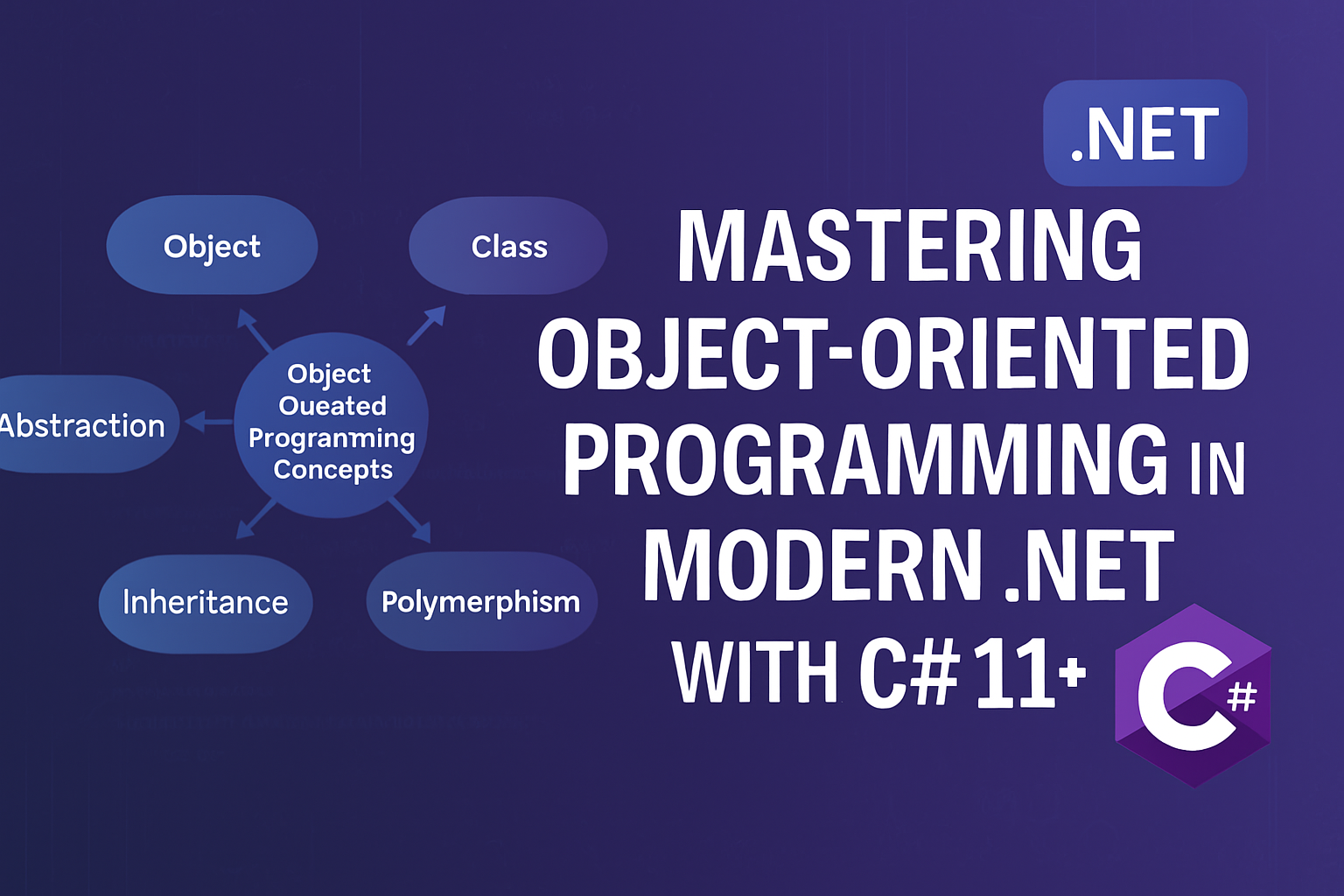Object-Oriented Programming (OOP) remains the foundation of backend development in .NET—even with the growing popularity of functional paradigms. With modern C# (versions 10–12), we can apply classic OOP principles with more clarity, safety, and productivity.
This article explores how to use encapsulation, inheritance, polymorphism, and abstraction using modern C# features like:
recordandrecord structrequiredandinitsealed,abstract, andvirtualwithexpressionsfile-scoped namespaceprimary constructors(C# 12)
🧱 1. Encapsulation with init and required
public class Customer
{
public required string Name { get; init; }
public required string Email { get; init; }
public DateTime CreatedAt { get; } = DateTime.UtcNow;
}
initensures immutability after object construction.requiredforces initialization at compile time, avoiding null issues.
🧠 2. Abstraction and Polymorphism with Interfaces
public interface INotificationService
{
void Send(string message);
}
public class EmailService : INotificationService
{
public void Send(string message)
=> Console.WriteLine($"Email sent: {message}");
}
Code is decoupled and testable via Dependency Injection.
OOP + SOLID principles like Interface Segregation and Dependency Inversion.
🧬 3. Inheritance with abstract, sealed, and override
public abstract class Employee
{
public abstract decimal CalculateSalary();
}
public sealed class Developer : Employee
{
public override decimal CalculateSalary() => 8000;
}
abstractenforces implementation in derived classes.sealedprevents unintended inheritance.Use
virtualto allow extensibility when needed.
🧾 4. Using record for Immutability and Modeling
public record Product(string Name, decimal Price);
Perfect for DDD, DTOs, event modeling, or value objects.
Combine with
withexpressions:
var updated = product with { Price = 99.90M };
Eliminates boilerplate code and promotes immutability.
🧰 5. Object-Oriented Design with Primary Constructors (C# 12)
public class Order(int number, Customer customer)
{
public void Confirm()
=> Console.WriteLine($"Order {number} confirmed.");
}
Cleaner syntax for encapsulated models.
Great for microservices, use cases, and rich domain models.
🔒 6. Using sealed for Code Integrity
public sealed class PaymentProcessor
{
public void Process() => Console.WriteLine("Processing...");
}
Avoids unintended inheritance.
Recommended for domain services or sensitive operations.
🛡️ 7. OO + Records for Domain Events
public record OrderCreated(Guid OrderId, DateTime CreatedAt);
Immutable by design.
Fits perfectly into event-driven architectures (EDA).
✅ Conclusion
Object-Oriented Programming remains extremely valuable. When combined with modern .NET and C# features, it becomes even more powerful and expressive.
Key takeaways:
Use
recordfor immutability and value models.Apply
required+initfor safe and immutable construction.Protect domain models with
sealedandabstract.Use
interfacesandpolymorphismfor scalable architecture.
By embracing these practices, you’ll build cleaner, more maintainable, and more testable software with .NET.
🤝 Let's Connect
If you're working with modern .NET and want to master architecture, C#, DevOps, or system interoperability, feel free to reach out:
✍️ Medium
💻 Dev.to
📬 Email: contato@dopme.io



